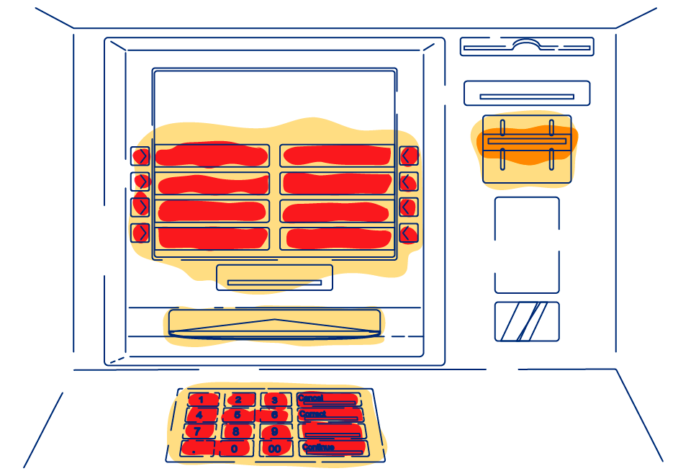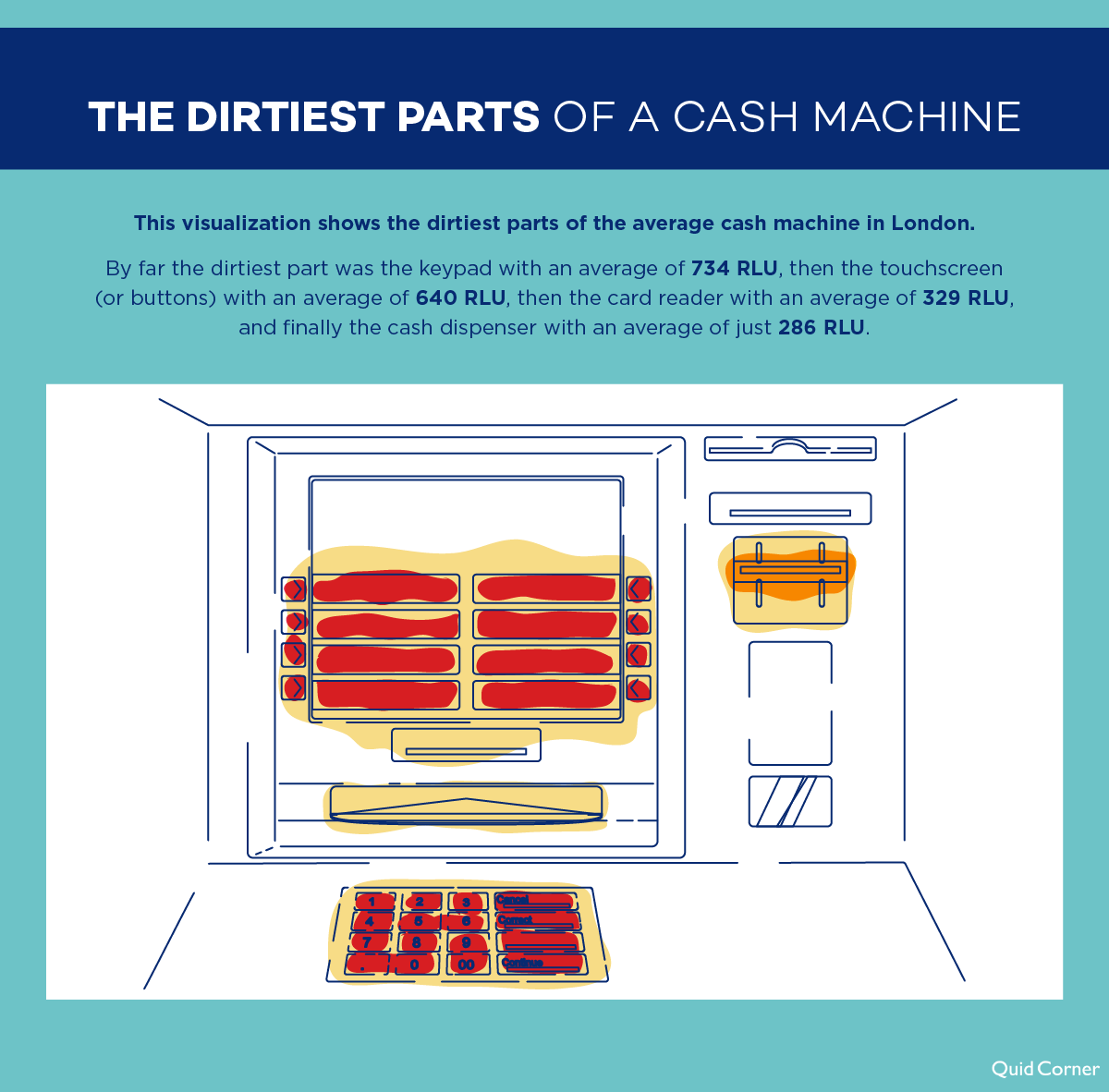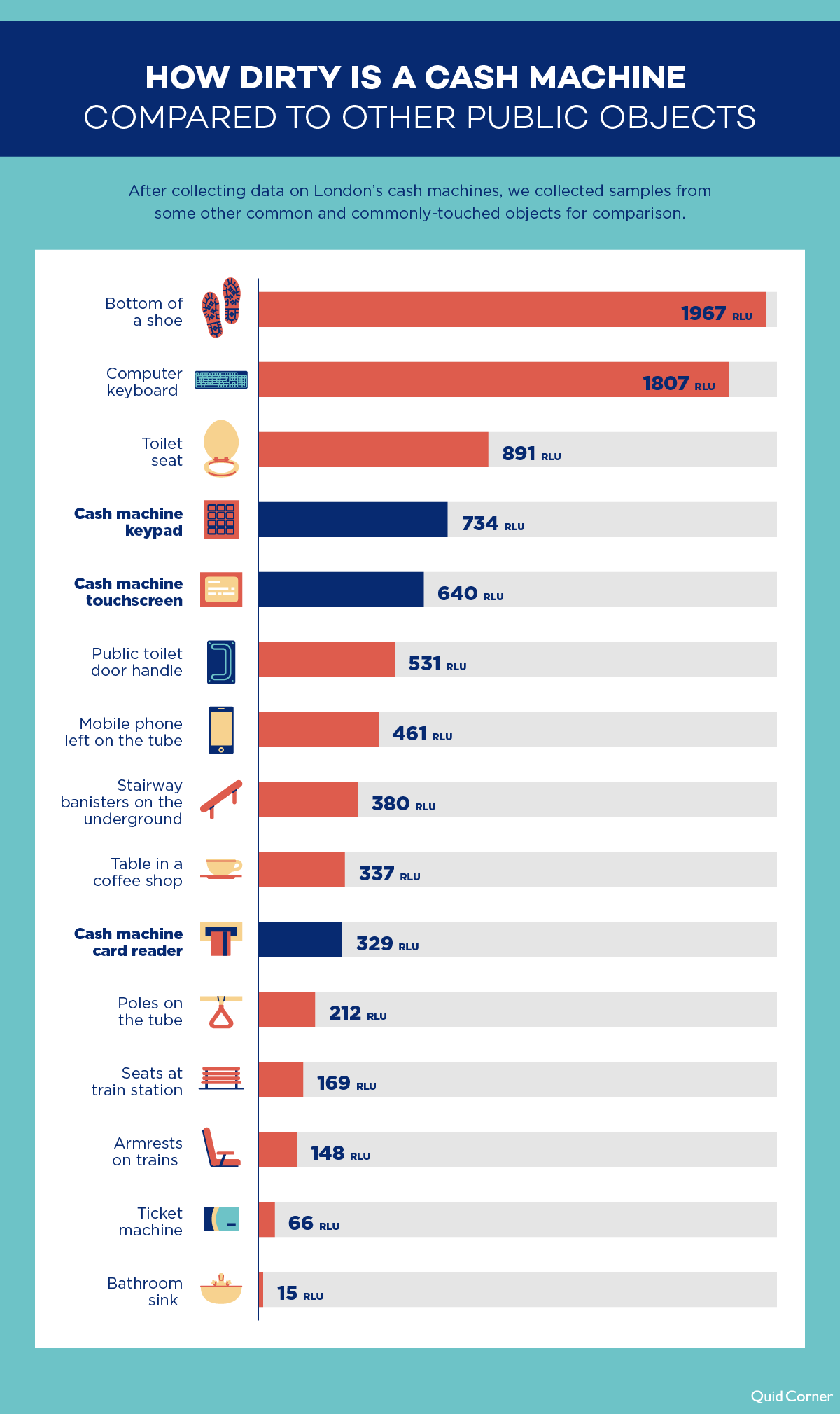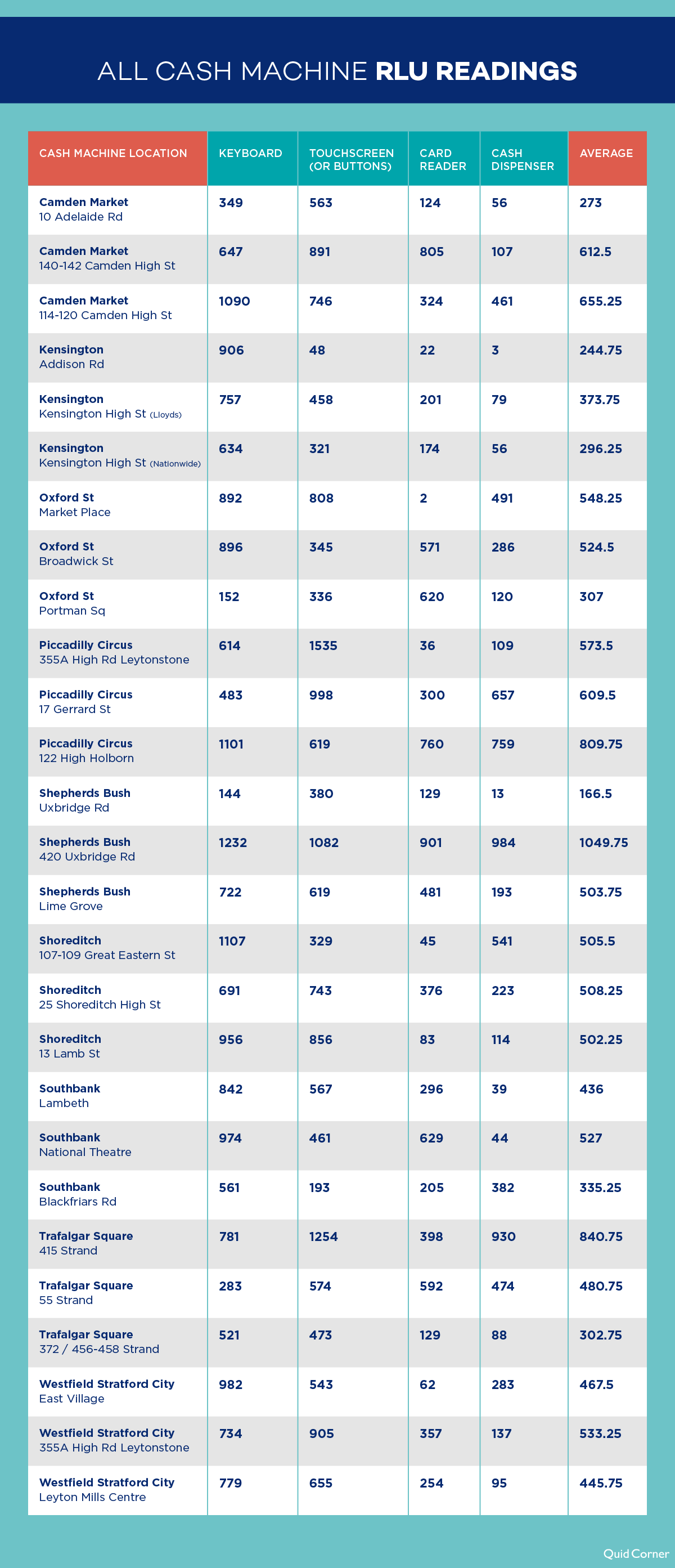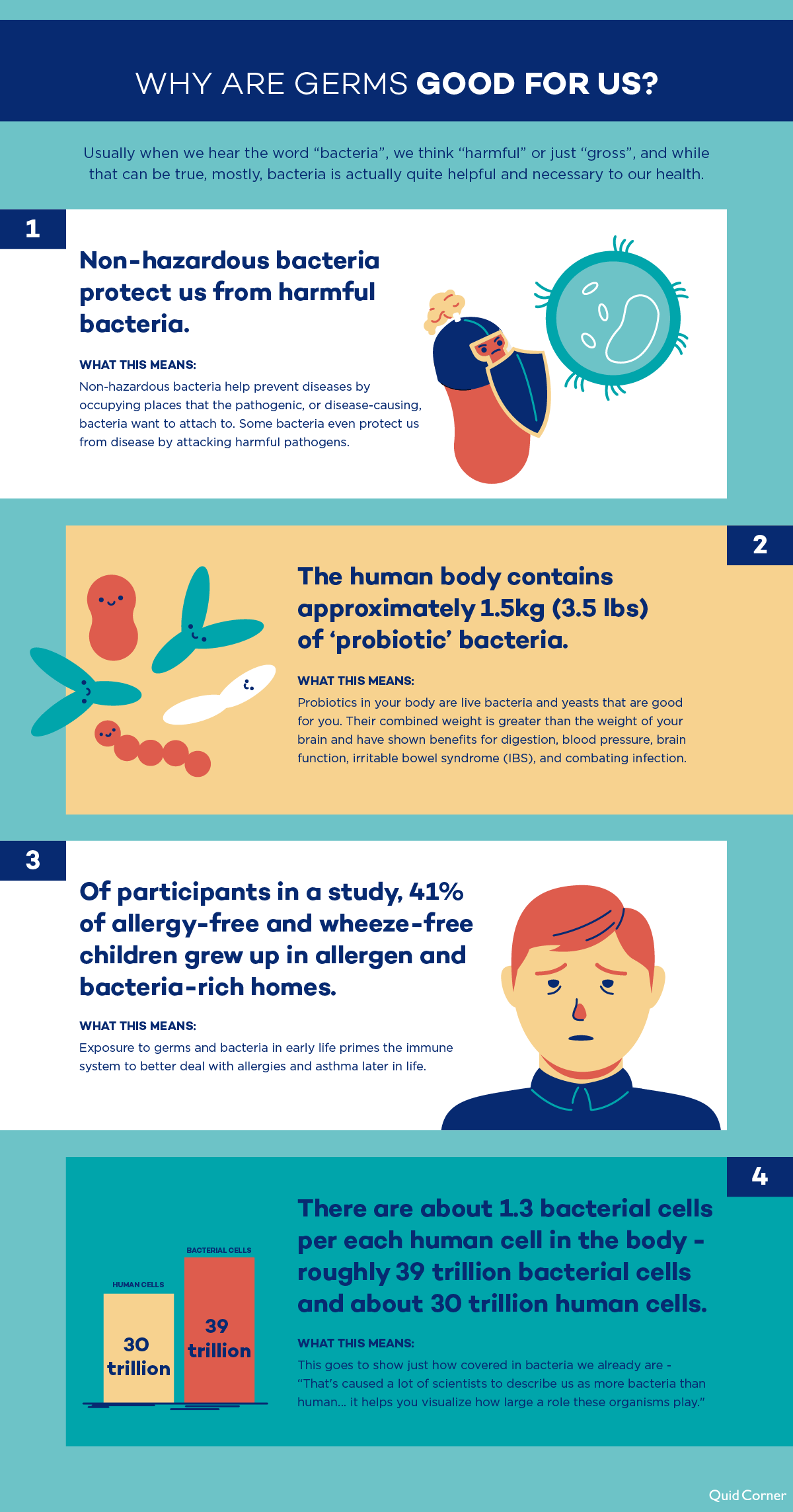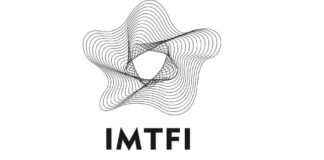We live in a dirty world. Wherever we go, we are among microbes. Bacteria, fungi and viruses live on our phones, bus seats, door handles and park benches. We pass these tiny organisms to each other when we share a handshake or a seat on the plane.
But there’s one everyday machine that you might not have thought about being crawling in bacteria: a cash machine.
Personal finance blog Quid Corner, investigated the levels of bacteria present in cash machines across popular boroughs in London. To conduct this study Quid Corner used an RLU reader called SystemSURE Plus. This device uses measurements of light to test for adenosine triphosphate (ATP), a chemical that bacteria use to process energy. The SystemSURE Plus returns an RLU (relative light unit) score.
The team swabbed cash machines from various boroughs all over London, and then placed the cotton swab in the reader. By swabbing the keypad, touchscreen, and card reader they were able to determine which parts of the average cash machine were the dirtiest.
Methodology of the London ATM study
The team behind this study used Google Maps to find various cash machines in some of the busiest, most heavily-trafficked areas of London. A shortlist was created including 27 cash machine locations that were dispersed throughout the city – not just in the city centre. Then, two researchers visited each of the 27 cash machines with an RLU reader.
The researchers swabbed the keyboard, the touchscreen (or buttons), the card reader, and the cash dispenser. Placing these swabs into the RLU reader gave them a number – the higher the number, the more dirt / bacteria there is on a surface. Once all the cash machines had been swabbed, the numbers were analysed to determine which parts of the average cash machine in London were dirtiest and which were cleanest.
The researchers then repeated this process with various objects and surfaces that are usually touched on a typical London commute – from the bottom of a shoe to the bathroom sink. With the RLU reader results in hand, the team was able to compare the cleanliness (or lack thereof) of London’s cash machines and various other surfaces around the city.
Back at the office, the researchers did some digging into germs themselves. Using information provided by the World Health Organisation, The NHS and the US Centers for Disease Control and Prevention they researched just how common germs are and how important they are to our health, and also, simple ways we can prevent the spread of germs that may be harmful.
The study was performed by Quid Corner and was published as article on the Quick Quid website.
To learn more about the personal finance blog Quid Corner go to the Quick Quid site.
Have you ever thought about your credit card and how clean it is – or better: how dirty? Maybe wash your hands before reading our article on the tidiness of debit and credit cards in the USA.
And if you ask: What about our money? Are there bacteria on it? Yes, they are, but why you don’t have to worry too much, you can read in our MintWorld Compendium issue dedicated to the topic of “Coins and Good Health”.



